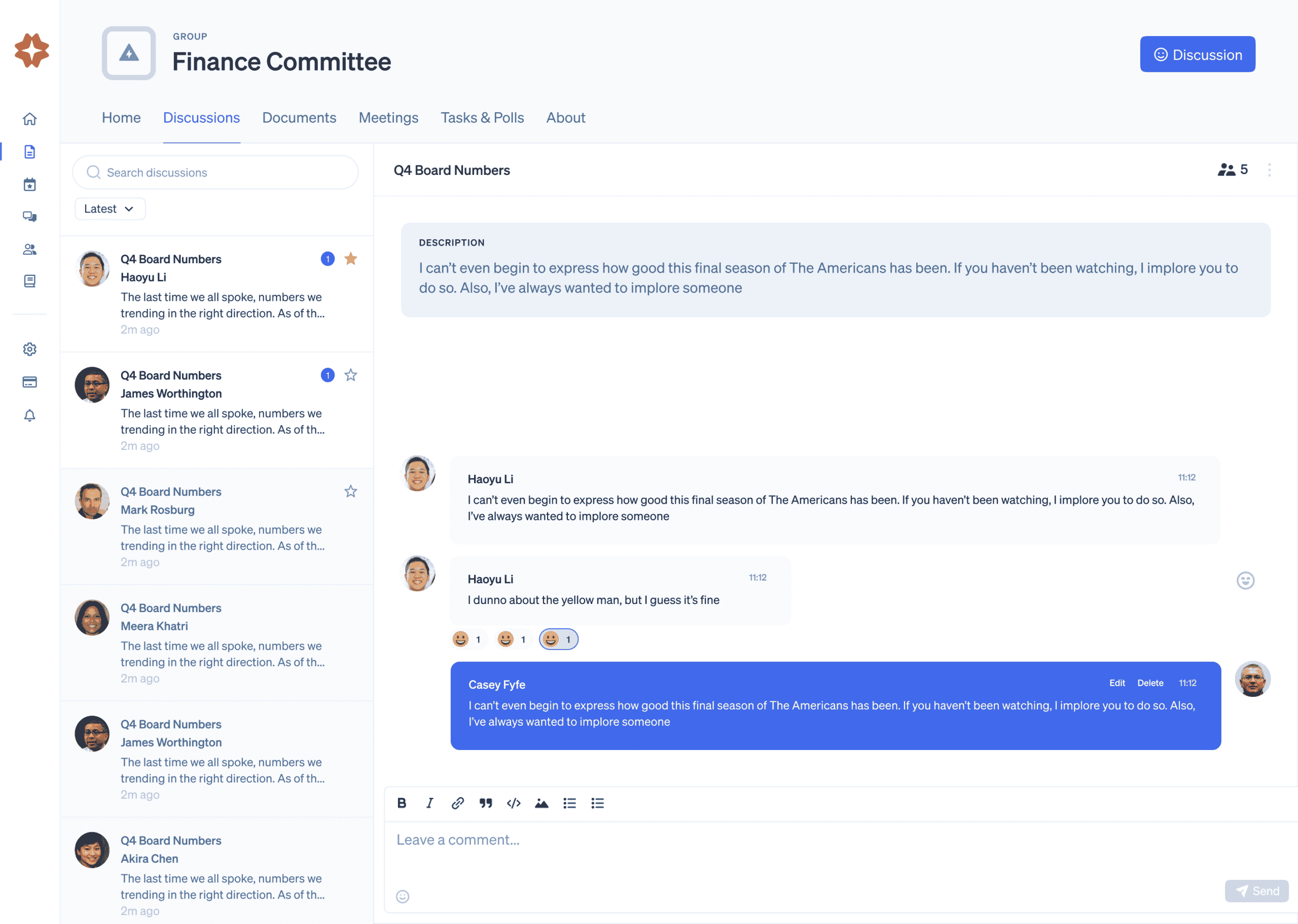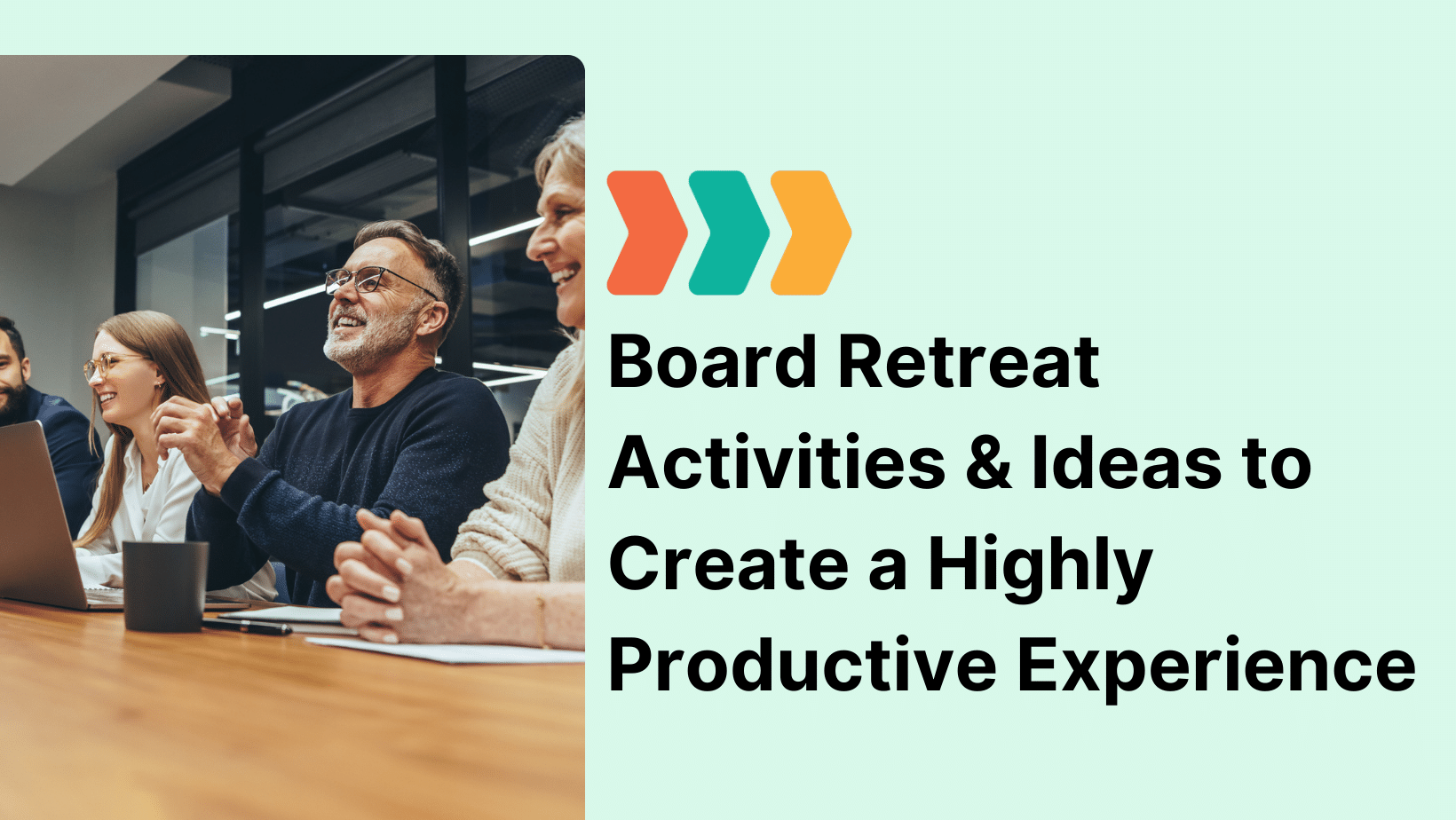The importance of boards of education and their meetings cannot be overstated. However, there are a number of challenges that boards are facing today. During this article, you’ll learn about the most common issues of school boards and discover the available tools, solutions, and turnarounds to help them succeed:
- What Is a Board of Education?
- The Rising Challenge of Board Management in Schools
- Board of Education Meeting Today
- Problems Facing Boards
- Board Meeting Apps
- Leveraging AI & Modern Features for Smarter Boards
- A Cost-Effective Board Management Solution
- The Future of Boards of Education
What Is a Board of Education?
Boards of education are committees that determine the educational policies of regional school districts. They set performance standards and meet with other elected officials to decide on the best course of action for benefiting students, teachers, and administrators.
Boards play a critical role in the success of schools, as they provide an open platform for discussion, collaboration, and problem-solving. A board of education meeting covers a variety of topics related to all aspects of education, which is why it having tailored tools like school board software for conducting effective meetings.
The Rising Challenge of Board Management in Schools
School boards today are facing an increasing number of challenges that make effective governance more difficult than ever. Budget constraints, growing community expectations, and the complexities of managing hybrid or remote meetings all add pressure to already overburdened administrators.
Board members and school officials are tasked with overseeing policies, financial planning, and student success, all while navigating outdated systems that hinder rather than help their efficiency. In response, many boards are seeking cost-effective, user-friendly solutions that enhance collaboration and streamline decision-making. Boardable emerges as a top alternative to expensive legacy systems, offering a modern, accessible, and budget-friendly board management solution.
The Roadblock: Integrating Tech with Human Interaction
The CPS board meeting live stream demonstrates the way in which board members can participate in meetings, even if they aren’t at the meeting location. Viewing a CPS board meeting can give you a better idea of how live streams work. They offer a window into education policy-making and can be an excellent resource for other boards that are looking for new and innovative ways to engage board and community members better.
You might also look at the CPS board meeting schedule, CPS board minutes, and CPS board reports for a more thorough understanding of how CPS runs meetings. You can even reach out to CPS board members directly for a CPS board meeting schedule or even some basic information on what their board does.
One of the significant roadblocks they have to contend with in the modern age is accessibility. While technology like that leveraged by CPS provides a welcome avenue for members to join in on meetings no matter where they’re located, it is not without its limits. Boards are thus tasked with finding solutions for integrating technology with human interaction and keeping all members on the same page—even when they’re working remotely.
Board of Education Meeting Today
When conducting a board of education meeting today, it’s crucial to account for the various needs and concerns of each member. This is essential to holding a productive meeting and ensuring the continual and seamless flow of ideas. While most meetings today are held in person and cover a wide range of relevant topics, they can be improved with technology. Video makes it possible for students and teachers to interact, even if they’re located on opposite ends of the world. Online chat allows participants to share ideas and ask questions in real time. As digital transformation takes hold in education, boards will need to adapt to better serve students and the public, and implementing technology is one of the primary ways that they are transforming their work.
Common board challenges associated with digitizing meetings include lack of access to technology and connectivity issues. Figuring out how to tackle these challenges is perhaps the most important board of education responsibility when it comes to technology. They need to determine how to include all members and those in the community while keeping meetings personal and engaging; they need to be able to centralize critical documents and create a single source of truth so that members can easily locate schedules, meeting agendas, and more. By doing so, they can create a more productive environment for everyone involved.
Problems Facing Boards
There are multiple problems facing boards today. Technology-related issues are among the most common, but the following are some of the other major challenges that boards are contending with:
- Parent engagement: Engaging parents is among the most pressing issues boards are dealing with today. It can be difficult to gather feedback from parents, many of whom work full-time during the day and are unable to attend meetings on a regular basis. Technology is providing helpful solutions, allowing parents and others to tune into meetings and voice their concerns without having to be physically present. They can add to the board of education meeting agenda and offer suggestions for improvement. Students and community members can also tune in via live stream and video chat.
- Security: In addition to parent engagement, some boards struggle to enact security measures. This challenge is most often faced by those that utilize technology for their meetings. It’s important to protect confidential information and data, but that can be difficult when communicating online—especially with those that aren’t regular board members.
- Class size: Another challenge that boards frequently encounter isn’t directly related to boards themselves but classroom management. Boards often struggle to determine the most appropriate class size, as placing too many students in one class can result in overcrowding, while making class sizes too small can hinder engagement.
- Budget: Board meetings are rarely complete without a discussion around budget. Members are responsible for allocating their district’s budget in the most efficient way possible. They may disagree on which areas require the most funding, and this can lead to less productive meetings.
- Student conduct and discipline: There is a myriad of issues related to student behavior that may be covered at board meetings, and members may struggle to come up with solutions that make everyone happy. It can be difficult to find a middle ground between allowing for students’ freedom of expression and setting rules of conduct for the entire student body.
Considering the number of tasks for which board members are responsible, it’s important that they use the right tools to keep up with their workflows. Board meeting software allows users to manage all critical tasks and stay in touch with other members. It provides a centralized platform through which they can collaborate and share resources to help tackle whatever issues they’re dealing with.
Board Meeting Apps
Board meeting apps allow users to access board meeting software from their mobile devices. You might use an app to schedule a school board meeting, communicate with other members on agenda to-do lists, and share documents. Board of education meetings can run much smoother when managed through an app. Instead of trying to keep track of everything on paper, you can centralize meeting-critical info in a single software platform. This makes it easier for board members to stay on top of each task and ensure that items are taken care of in a timely fashion.
Because apps like these don’t usually require complex software, you can download and start using them right away. No matter how tech-inexperienced you are, you can take full advantage of all the tools and features your app of choice has to offer without having to jump through all the hoops associated with more complex software. Board meeting apps make it easy for board members and others to access the information and communication tools they need to hold productive meetings that benefit everyone involved.
Another significant benefit of using a board meeting app is that you can easily meet with board members that are working remotely. Some meeting apps have built-in video technology so that members can hold meetings on the go. With board meeting software, you can be agile, make quick decisions, and engage members on a deeper level. This is critical to achieving a higher level of success and completing your board tasks on a more timely basis.
Leveraging AI & Modern Features for Smarter School Boards
Board management is no longer just about agendas and minutes—it’s about collaboration, engagement, and efficiency. Boardable’s latest features address these needs head-on:
AI-Powered Meeting Support
Boardable’s AI Assistant helps schools:
- Auto-generate meeting summaries and action items
- Suggest agenda structures based on past meetings
- Provide real-time insights to keep discussions on track
Mobile-First Accessibility
With Boardable’s mobile app, board members can:
- Access documents, vote, and communicate on the go
- Get real-time updates and reminders
- Join hybrid meetings from any device
Seamless Hybrid & Virtual Meetings
With Boardable Video, schools can:
- Host fully virtual or hybrid board meetings
- Keep discussions interactive with live document collaboration
- Automate meeting minutes for improved accuracy
A Cost-Effective Board Management Solution
Many school boards have relied on other legacy platforms to help manage their board management efforts. However, the high costs and rigid pricing structures have led districts to explore more flexible and affordable alternatives.
What’s the Boardable Difference?
- Transparent, budget-friendly pricing: Boardable provides customized pricing options that are significantly more affordable than other board management tools, ensuring that school districts get maximum value without overpaying for features they don’t use.
- Intuitive, all-in-one platform: Boardable offers an integrated, easy-to-use interface designed for both tech-savvy and non-technical board members.
- Faster ROI: Schools using Boardable report a significant reduction in administrative hours on board meetings, allowing resources to be redirected toward student success initiatives.
The Future of Boards of Education
Looking ahead to the future of board of education meetings, technology is likely to play an even bigger role in facilitating meaningful interaction. It will enable board members to come together around critical issues and create a centralized database of useful documents that can come in handy during meetings. Policies that were enacted in the past, such as No Child Left Behind, included a wide range of tasks and requirements that could have been more easily managed with board meeting software. Thankfully, education policies that are in place today can be handled more effectively using special tools and technology.
Getting started with technology can be difficult, especially for those that have traditionally held board meetings the old-fashioned way, but learning how to effectively utilize digital tools can go a long way in improving your board meetings. With the right software, you can transform your meetings and provide members with the freedom and flexibility to tune in how and where it’s most convenient for them. This can encourage better communication and enable board members to contribute to discussions without having to deal with the hassle of physical paperwork and trying to set agendas when members are operating on different schedules. Board of education software helps to streamline processes and get everybody on the same page, regardless of where and how they’re working.
Boardable offers valuable software for users to engage their boards and communities. Whether you’re looking to create a board of education meeting schedule, compile documents, or build agendas, Boardable provides the tools you need to stay on top of your board-related tasks. The platform also allows for discussions and polls, and votes to engage participants and get a feel for the issues that are most important to them. Boardable takes board meeting software to the next level and allows boards of education to work smarter and leverage their resources in the most effective way possible. The platform is future-proofed to help students in today’s digital climate and lets users stay a step ahead in education.
See how your school board can benefit from Boardable. Get a free demo to experience Boardable in action today!





